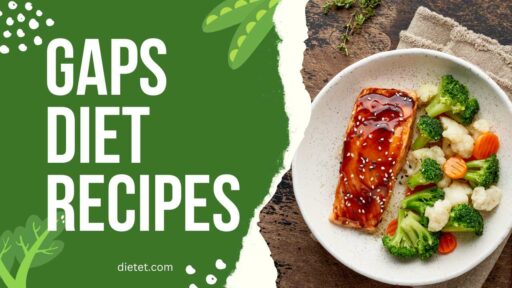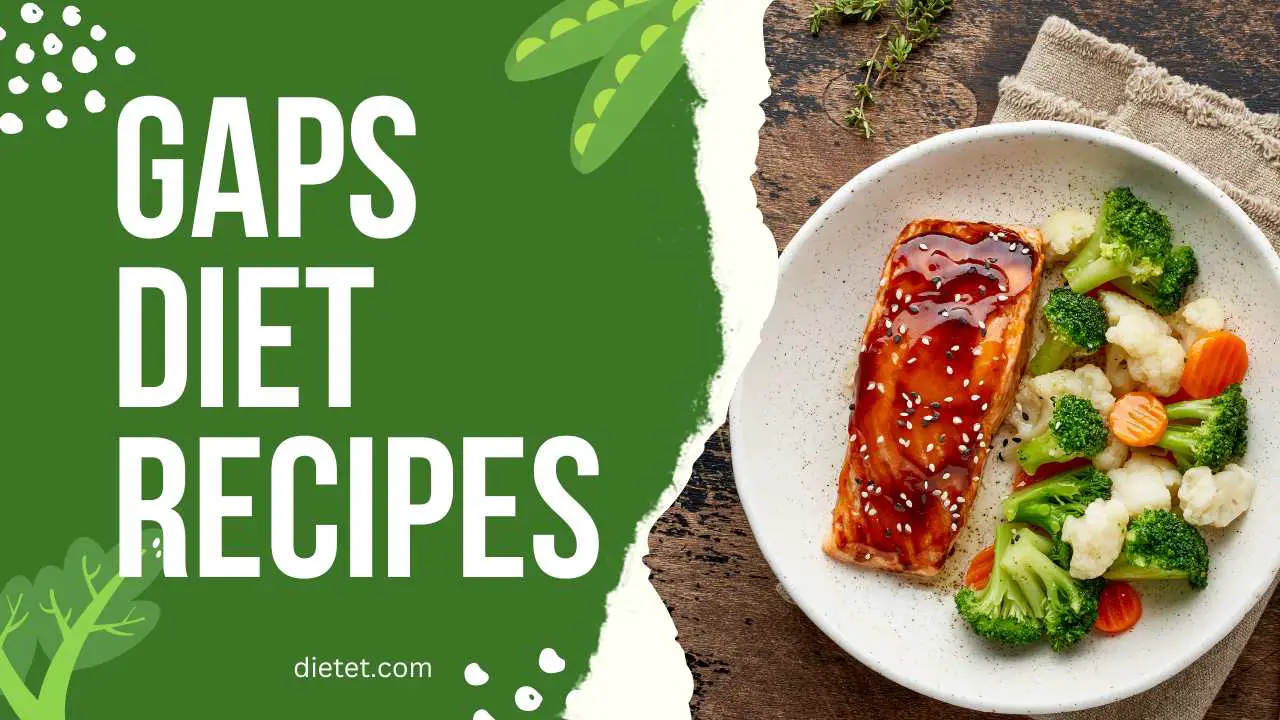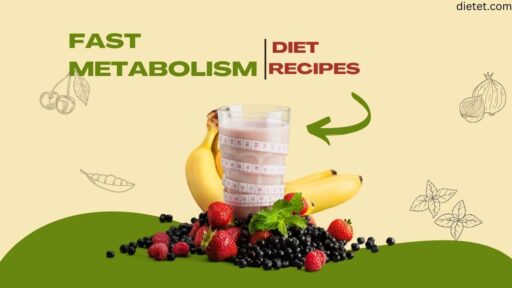Find a wide range of flavorful GAPS diet recipes to help you on your journey to improved digestion and overall wellness. Start cooking today!
Introduction to Gaps diet recipes
Feeling lethargic and having problems with your digestion? The Gaps diet recipes (Gut and Psychology Syndrome) diet may be worth considering. This exclusionary eating plan places its focus on good intestinal health, holding that a healthier gut microbiome will impact digestion as well as general mental and neurological health. The core of the diet is about the reintroduction of certain foods at different phases to help identify potential sensitivities and restore a healthy gut environment. In this paper, we are going to discuss the GAPS diet and its possible advantages in more detail.
Understanding the importance of gut health
Before we go into describing what GAP is all about, it is crucial to comprehend why our well-being depends heavily upon our digestive system. Our gut, often referred to as the second brain, plays an important part in both our physical and mental health. It supports up trillions of bacteria both harmful and beneficial for digestion, absorption of nutrients as well as our body immunity.
Once the balance of organisms in our guts is upset it can lead to many diseases including gastrointestinal tract disorders, autoimmune conditions, psychiatric illnesses among others. That’s where the Gaps Diet comes in. By focusing on healing and sealing the gut lining, gaps diets aims at restoring balance thus leading to an optimal intestinal track.
Benefits of the GAPS diet
The GAPS diet isn’t just a fad or another kind of slimming program; rather, it’s a remedial protocol that has been found useful for people suffering from GI-related problems. Some major advantages include:
- Improved Digestion: The GAPS diet can improve digestion by eliminating inflammatory foods such as nuts, which cause bloating, gas, or constipation.
- Better Nutrient Absorption: When our digestive system becomes inflamed or imbalanced, it makes nutrient absorption difficult from consumed foodstuff. Closing gaps in your intestines helps improve uptake ability for necessary vitamins plus minerals.
- Reduced inflammation: The GAPS diet can help prevent chronic inflammation by way of eliminating immunogenic foods and incorporating anti-inflammatory ingredients.
- Mental Health Support: The link between gut health and mental health is very strong. The GAPS nutritional program has been shown to alleviate symptoms of anxiety, depression, ADH, D, and other psychiatric conditions among individuals with underlying gut issues.
Getting started with the Gaps diet recipes
Now that you know what GAP involves and its benefits, we are going to provide a step by step guide on how you can begin.
Talk to a healthcare provider: It’s important for you to first consult your doctor before starting any new diet or making lifestyle changes especially if he understands what GAPS is. They will help you figure out the best plan for your situation.
Take out inflammatory diets: The first phase of the gaps diet involves removing inflammatory foods like cereals, vegetable oils and processed sugars that contribute to gut inflammation hence impairing healing process.
Emphasize nutrient-dense diets: In this case, the Gaps Diet emphasizes organic meats, fish, eggs, vegetables, and fermented foods, which are all rich in nutrients. These foods offer the nourishment necessary for repairing our intestines.
Implementing the GAPS diet stages: The GAPS diet is broken down into different stages, beginning with a strict introduction and then followed by a phased reintroduction of certain foods. You have to follow the stages and move at your own pace.
By following these steps, you will be well on your way to improving your gut health with the GAPS diet.
What are the necessary ingredients needed for GAPS diet recipes?
When preparing tasty and nutritious GAPS diet recipes, it is important to stock up on the right items. Here are some crucially important inclusions that must be present in your pantry if you are serious about sticking to GAPS:
Grass-fed meats: Grass-fed meats contain omega-3 fatty acids, and they do not have antibiotics or hormones. For better results, buy organic meat that was raised outside.
Bone broth: Bone broth is very popular in GAPS diets because of its collagen, gelatin as well as amino acids which help in the healing process of the gut. It can be made using grass fed bones or bought from reliable sources.
Fermented foods: Fermented foods have good bacteria that maintain equilibrium within our gut microbiome. These include sauerkraut, kimchi, and kefir, among others.
Organic vegetables: This includes vegetables like broccoli, cauliflower, asparagus, etc. They are vital components of GAP diets due to their high content of vitamins such as C and K1 minerals like magnesium and fiber, which are rich in polyphenols. Organic ones should be chosen over non-organic ones where possible so as to protect yourself from chemicals used during farming.
With these essential ingredients stocked in your pantry you’re sure to create mouthwatering & gut-friendly dishes using Gaps Diet Recipes.
Breakfast Recipes for the GAPS Diet
The breakfast options on Gaps Diet may differ depending on what stage you are at because this diet follows specific introduction plan. Here’s a look at some potential GAPS diets for different stages of introducing food.
Intro Stage (Bone Broth Only)
Warm bone broth with a squeeze of lemon or lime (optional)
Full Intro Stage
Avocado Slices with Sea Salt: Simple and satisfying, rich in healthy fats.
Scrambled Eggs with Ghee: Great source of protein + fats. Add some ghee to get better taste and more benefits for your stomach.
Sweet Potato “Hash”: Grate or finely chop the sweet potato and sauté in ghee or avocado oil until tender. Season with herbs like rosemary or thyme.
Later Stages (Once Reintroduced)
GAPS “Oatmeal”: First, grind almonds, walnuts and pecans until they become somewhat flour-like. Then mix it up with bone broth which should be cooked so that you have something similar to porridge for the breakfast.
Fruit and Vegetable Smoothie: Combine allowed fruits like berries along with vegetables such as spinach, cucumber etc., into a blender producing refreshing and full of nutrients early morning drink to start off your day.
Soured Cream and Chive Omelets: When fermented dairy, including soured cru, team is tolerated in an omelet, it becomes rich in proteins while still remaining creamy.
Important Reminders
Always consult with a healthcare practitioner before starting the GAPS diet or making significant dietary changes.
The information above provides a general overview, and specific ingredients allowed may vary depending on your individual tolerance and GAPS stage.
Refer to trusted GAPS resources for detailed information on allowed ingredients and recipe variations based on your current stage.
Lunches & Dinners Recipes for the Gaps Diet
When it comes to lunchtime, time while observing gaps in diet, there are countless ways through which one can prepare mouthwatering meals that will not only satisfy but also nourish him/her. Check out these recipes that will give you meal ideas when planning for your gaps diet:
Roasted Chicken with Vegetables: Prepare a whole organic chicken roasted alongside mixed vegetables like carrots, onions or Brussels sprouts for a filling and complete meal.
Zucchini noodles with meat sauce: Make your favorite pasta dish but switch from traditional to spiralized zucchini topped with homemade grass-fed ground beef meat sauce tomato paste.
Baked salmon with roasted asparagus: Thyme-flavored wild-caught fillet of salmon kept aside with asparagus shoots at one end; that’s how simple and elegant one can get even when it comes to the GAPS diet dinner.
These lunch and dinner recipes prove that the GAPS diet can be both nutritious and delicious, making it easier to stick to the protocol.
Snack and dessert recipes for the GAPS diet
While on the GAPS diet, you may find yourself craving a snack or dessert from time to time. Luckily, there are plenty of options that are GAPS diet-friendly. Here are a few recipes to satisfy your cravings:
Almond butter energy balls: Mix almond butter with coconut flour, honey, and vanilla extract into small spheres of energy snacks that you can use in between your main meals.
Baked apple chips: Peel apples into thin slices which you then bake until they acquire a crispy texture for this is an alternative way of eating something sweet minus adding sugars.
Coconut milk ice cream: Blend frozen berries and honey together with full-fat coconut milk so as to have creamy, refreshing desserts that adhere strictly to GAPS dietary requirements.
By incorporating these snack and dessert recipes into your GAPS diet meal planning, you can indulge in a treat without compromising your gut health.
GAPS diet meal planning tips
Here are some GAPS diet meal planning tips to help you navigate the different stages and create delicious, gut-healing meals:
Planning and Preparation
Stage Awareness – Your current stage will determine what food should be chosen for your meals. Refer to a stage chart on GAPS or consult a medical expert.
Batch Cooking – For stages that have more allowance for options, cook bone broth in bulk and store it away; you can as well roast vegetables or prepare fruits and vegetables days ahead of the week to save your time.
Seasonal and Local – Whenever possible, go for seasonal and local products. It guarantees freshness, helps out the farmers where you live, and provides better tasting foods too.
Stock the Pantry – In your pantry ensure that there is an assortment of GAPS approved basics such as bone broth, coconut milk, ghee, nuts (almonds, walnuts, pecans) along with allowed vegetables.
Building Balanced Meals
The GAPS Plate: Make sure every meal has a balanced plate containing proteins like meat (beef/lamb), fish (tuna/salmon), eggs, lots of non-starchy veggies, and healthy fats like avocado oil/ghee/coconut oil.
Variety is Key: While variety may be limited in the GAPS diet, it is possible to achieve different tastes when using permitted ingredients. Use herbs such as basil/ spices together with allowed vegetables in order to keep meals diversified.
Bone Broth is King: The bedrock of this dietary program is comprised of bone broths. Use it while cooking soups/stews or even sip on it alone during the day so that you can remain hydrated while taking advantage of gut-healing properties.
Sample GAPS Meal Plans (Adapt based on your stage)
For breakfast, scrambled eggs with chopped veggies and sliced avocadoes; alternatively, make “oatmeal” by simmering nut flour into a mixture of bone marrow soup.
Lunch: When having lunch, you can either choose salmon which has been slightly cooked besides roasted root tubers accompanied by a salad containing olive oil plus vinegar dressing, or serve the fermented vegetable platter with some sliced meats accompanied by nuts.
Dinner: Chicken stir-fry with permissible vegetables (broccoli, peppers, onions) fried in coconut oil and served over cauliflower rice. Alternatively, lentil soup (if your state allows it) can be consumed with avocado on the side.
Snacks: Sliced vegetables with guacamole or hummus (in case you tolerate it), nuts and seeds, or sliced fruits such as berries.
Credit: Dr. Josh Axe
FAQs
Can just anyone use the GAPS diet?
It is for treating patients without related issues. Before commencing this diet – determine if it is appropriate for you through consultation with any medic of your choice.
How soon can I expect to see changes in the GAPS diet?
The period of time within which changes become visible from using the GAPS diet will differ based upon an individual. It may take several months before some individuals start experiencing symptoms alleviation although others may experience improvements in their symptoms after a few weeks only. Adherence and being consistent are highly recommended when it comes to sticking to this eating plan.
Is it possible to attend social events and dine out while adhering to this GAPS diet?
Although attending social events and visiting restaurants as one embraces the GAPS diet can be challenging, it is doable especially when planned well ahead of time. Select meals that resonate well with the principles of a GAPS diet, or simply prepare your own dish that conforms to those notions.
Conclusion: Embrace the Gaps diet recipes for a Healthier Gut
In conclusion, the key takeaway here is that adopting a Gaps diet recipes could really help sort out your gut health problems and also make you feel generally better. Therefore, by understanding why gut health matters as well as how good effects gaps diet has on people’s lives posited here down through incorporating delicious recipes packing nutrients found in gaps diets into meal scheduling, we have an opportunity to control our intestines which would eventually lead us to transform effects gotten from therapeutic feeds wherefore do we wait? Why don’t you go on the GAPS diet today and make your gut feel loved and nourished?





